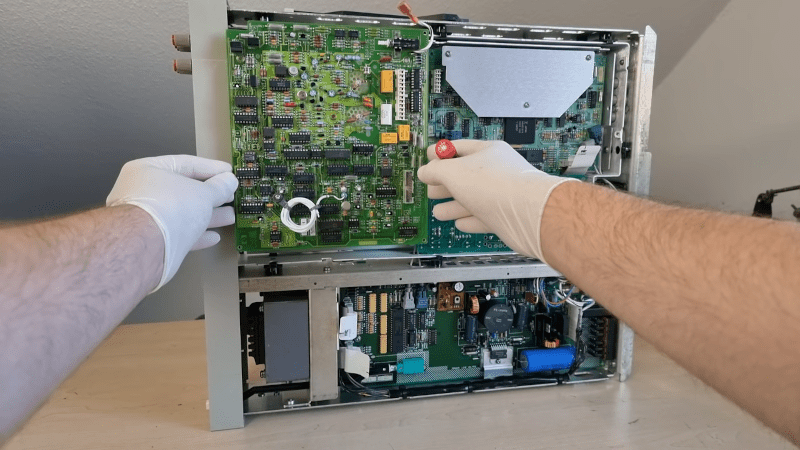
[Marco] looks at a lot of meters. However, he considers the HP3458A the best even though they were introduced more than 30 years earlier in 1989. Someone donated one to [Marco] but it presented some error messages on startup and exhibited erratic behavior, so he had some repairs to do.
The error codes hinted there were issues with the multislope analog to digital converter and that’s what sets the meter apart, according to [Marco]. The meter has 8.5 digits, so a normal conversion stage won’t cut it.
The good news about the problem is that it gives us an excuse to see inside the box. Each board inside looks about as complex as a modern PC motherboard. At this accuracy range, the board is covered in custom high-performance resistor networks.
A standard way of converting voltages to digital uses the time required to charge and discharge a capacitor and the required time indicates the voltage. This meter uses multiple possible slope resistors and [Marco] explains how the meter uses fast and less accurate slopes to get a rough reading and then uses slow and accurate slopes to refine the lower digits.
A custom chip has an IC and a custom resistor network and, if it fails, makes the meter virtually unrepairable without a trip to a factory service center for a new board at about $3,000. The custom chip appeared to work ok and replacing comparators that are known to fail didn’t help.
The next move? Buy all the parts you can find for the board (about $100) and simply replace everything. We liked how he removed excess component leads on the rebuild. At first, it seemed like this might work, but self-calibration failed. It appears the custom IC might have been bad, so he wound up replacing the entire conversion board.
That cleared the main error, but there were still problems with some measurements and that led to another board to repair. The circuits in question do RMS conversion for AC signals. The meter has several methods to measure RMS.
The video is a great detective story and you’ll learn a lot about what’s in a high-resolution meter. After it is all working, we get a tour of oddities like the cable that acts like a capacitor and the noisy fan.
[Marco] is no stranger to high-precision meters. We’ve looked at these meters before, too.
No comments:
Post a Comment